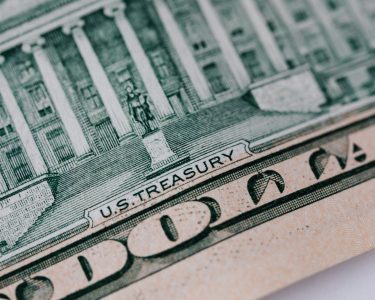The recent rescue of First Republic Bank, one of the largest lenders to high-net-worth individuals in the United States, has raised questions about the stability and health of the US banking system. While this may seem like an isolated incident, it is just one example of a larger trend that could have serious consequences for both banks and consumers alike. In this blog post, we will explore whether or not these issues are indicative of deeper problems within our financial system and what steps can be taken to address them. So buckle up and get ready to dive into this important topic!
What is the First Republic rescue?
First Republic Bank is a San Francisco-based bank that is known for its focus on serving high-net-worth individuals. In late 2020, the bank found itself in hot water when it was discovered that it had made loans to a New York real estate developer who was under investigation by federal authorities. The bank’s stock price plummeted as investors worried about the potential fallout from this scandal.
In response, First Republic turned to some of its largest shareholders for help raising capital. These investors agreed to purchase $1 billion worth of new shares in the company, effectively bailing out the bank and helping it avoid a potentially disastrous situation.
While this may seem like a positive outcome for First Republic, some analysts have raised concerns about what this rescue says about the broader banking system in America. In particular, they worry that banks are becoming too reliant on wealthy investors and not doing enough to manage risk or protect consumers from financial instability.
Only time will tell whether or not these fears are justified, but one thing is clear: the First Republic rescue has brought attention to some serious issues within our financial system that need to be addressed sooner rather than later.
What are the larger issues within the US banking system?
The US banking system has faced several issues over the years, with some of these issues being more significant than others. One major issue is the lack of accountability and oversight in financial institutions that led to the 2008 financial crisis. This crisis resulted in many banks failing, while others needed government bailouts to remain operational.
Another issue relates to predatory lending practices where vulnerable individuals are targeted by lenders offering high-interest rates and unfavorable loan terms. These practices have often been directed at low-income individuals who cannot afford legal representation or do not understand their rights as borrowers.
Additionally, there is a growing concern about income inequality and how it affects access to credit and other financial services. Many people face barriers when trying to open bank accounts or secure loans due to factors such as race, ethnicity, or socio-economic status.
These larger issues within the US banking system highlight the need for stronger regulation and consumer protection laws that can help prevent unfair practices while promoting greater transparency and accountability within financial institutions.
How does the First Republic rescue indicate these issues?
The First Republic Bank’s rescue by the Federal Reserve indicates larger issues within the US banking system. One of the main issues is a lack of transparency in banks’ balance sheets, which can make it challenging to assess their financial health accurately.
Moreover, some banks have been taking on excessive risks and making poor investment decisions, putting them at risk of insolvency. In recent years, many banks have also faced regulatory challenges due to inadequate compliance programs.
The failure of these institutions could cause systemic risks that would threaten the stability of the entire banking system. That’s why regulators are often forced to intervene when a bank is facing financial difficulties like what happened with First Republic.
However, such interventions can lead to moral hazard problems where banks take more risks knowing that they will be bailed out if things go wrong. This creates an environment where risky behavior is encouraged instead of discouraged.
While rescuing troubled banks may prevent immediate crises from spreading throughout the economy; it highlights deeper structural problems within our banking system that need addressing urgently.
What are the potential consequences of these issues?
The potential consequences of the issues within the US banking system are far-reaching and could have serious implications for both individuals and businesses. One major consequence is the erosion of trust in the banking system. The repeated bailouts and scandals have left many feeling disillusioned with banks, which could lead to a decline in deposits.
Another consequence is that smaller banks may struggle to compete with larger institutions that receive government support. This can ultimately result in more market consolidation, leaving fewer options for consumers.
Furthermore, there is a risk of moral hazard where banks take excessive risks knowing they will be bailed out if things go wrong. This creates a dangerous cycle where risky behavior leads to crises, which then require taxpayer-funded rescues.
These issues could also harm economic growth as credit becomes harder to come by due to increased regulation or lack of confidence in financial markets. This would affect both businesses and individuals who rely on loans for investment or day-to-day expenses.
Addressing these issues will be crucial for restoring public faith in the banking system while preventing future crises from occurring.
Conclusion
The First Republic rescue is an indicator of larger issues within the US banking system. The lack of oversight and regulation has allowed banks to take on more risk than they can handle, leading to potential financial instability. This rescue also highlights the importance of ensuring that banks are well-capitalized and have sufficient liquidity to weather economic downturns.
It is essential for policymakers and regulators to address these underlying issues within the banking sector. Failure to do so could result in significant consequences for both individual investors and the broader economy as a whole.
As consumers, it’s crucial to stay informed about developments within the banking industry. One way we can protect ourselves is by diversifying our investments across different asset classes and carefully evaluating any financial institution before entrusting them with our money.
By recognizing these challenges facing our banking system, we can work towards building a stronger and more resilient financial sector that serves all Americans fairly and equitably.




